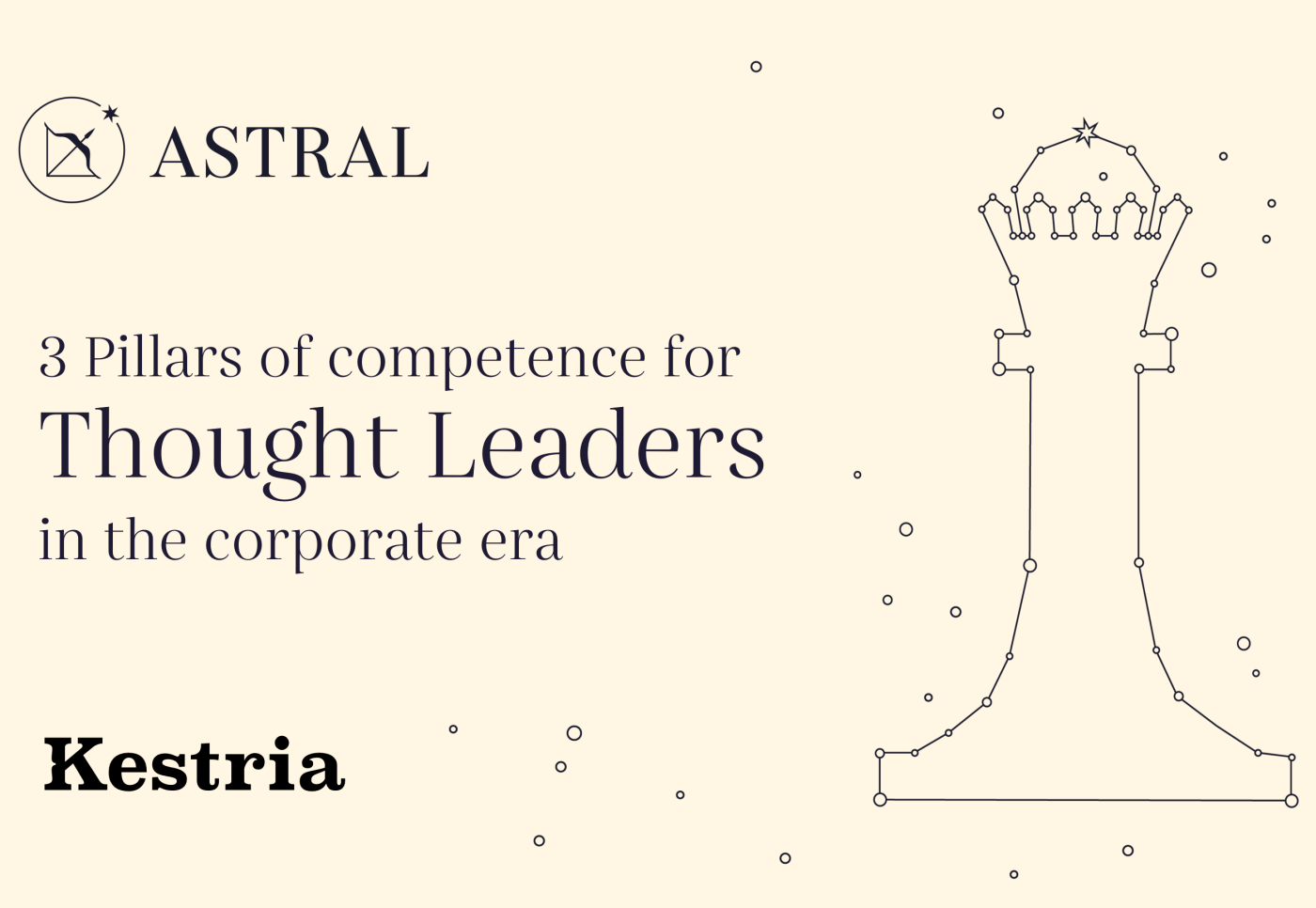In a scenario in which leadership profiles emerge and stand out with very different characteristics, an essential figure has emerged to successfully navigate the turbulent waters of the business world: the Thought Leader. This new profile of professionals not only masters their field but goes beyond it, actively shaping the business landscape with their innovative and insightful ideas.
Thought Leaders stand out not only for their technical expertise but also for their unique ability to influence and inspire. Their impactful presence on social media, ability to communicate ideas engagingly and willingness to challenge the conventional are characteristics that make them catalysts for change and competitive differentiators for the companies in which they operate.
‘Leaders are great listeners and ask the big questions; they bring out the emotion, not just the ideas, and build engagement,’ says Malcolm Duncan, Director, Kestria Australia.
When adaptation and innovation are increasingly imperative, the Thought Leader emerges as a beacon, guiding organizations toward sustainable success. This new leadership paradigm is rapidly gaining prominence and attracting the attention of companies seeking not just to survive, but to thrive in a constantly changing business environment. In today’s dynamic and challenging corporate arena, thought leaders have become key players in the strategic orientation and innovation of organizations.
There are three fundamental pillars of competence that distinguish true Thought Leaders. These pillars not only reflect technical expertise but also the unique ability to impact, influence and inspire in business environments.
Expert insights: Thinking outside the box
The first crucial pillar for a thought leader is the ability to have their own expert insights. These leaders not only have a deep mastery of their fields but also have the ability to go beyond conventional boundaries. They are innovators, capable of generating out-of-the-box ideas that challenge the status quo. This competence goes beyond the simple application of acquired knowledge; it requires the ability to anticipate trends, formulate innovative strategies and often express these ideas through publications, such as specialized books. A Thought Leader not only follows trends, but shapes and redefines the knowledge landscape in their sector.
‘New leaders must have the ability to empower their workers and lead them to question, build new visions and through these, continually renew and improve the organization of which they are part,’ adds Margarita Correa, Partner, Kestria Chile.
Media presence and influence
The second vital pillar is media presence and influence. It’s not enough to have innovative ideas; it’s crucial to communicate them effectively. Thought leaders must be active on social networks, blogs, podcasts and other relevant platforms. Their influence is measured not just by the number of followers, but by the quality of their online presence. Being cited by other leaders and recognized as a reliable source of knowledge in your field is essential. The ability to articulate and disseminate ideas in an engaging and impactful way is what distinguishes a Thought Leader from a conventional expert.
‘Leaders are building high trust leadership through consistent communication. By being good listeners, they learn how their people can further develop personally and professionally,’ states Hong Nguyen, Managing Partner Search, Kestria Vietnam.
Strength and firmness of opinion
The third essential pillar is strong and firm opinions. Thought leaders do not hesitate to express strong opinions, even if they may be controversial.
They don’t just seek to please everyone but are willing to challenge conventional thinking. This ability to defend bold perspectives while maintaining intellectual integrity is what gives a Thought Leader authenticity.
It is through this authenticity that they gain the trust of followers and colleagues, building a lasting reputation in the business world.
Developing the brand
Thought Leaders emerge as catalysts for change and innovation in response to the changing needs of the corporate landscape. The unique combination of expert insights, media presence and influence, together with strength and firmness of opinion, are the fundamental pillars that underpin the success of these visionary leaders.
‘In the current dynamic and competitive business environment, thought leadership can be a significant differentiator for organisations – nurturing a culture of innovation and inspiring others to think differently, challenge the status quo and embrace change – driving sustainable success,’ says Eimhin O’Driscoll, Director, Kestria Ireland.
Given this scenario, the question remains: who is the Thought Leader who stands out the most in their field?
In a universe full of brilliant and visionary minds, recognizing and learning from these leaders is a crucial step toward excellence and continuous growth. As we explore the vital role of Thought Leaders, it is imperative to reflect on who among the leaders in your professional sphere truly embodies these principles. The answer to this question could be the key to unlocking a more innovative and inspiring business future for yourself.
For Human Resources professionals, identifying and nurturing talent that possesses these competencies is crucial to driving the success and sustainability of organizations in the future.
Article by Carlos Eduardo Staut, CEO, Kestria Brazil

